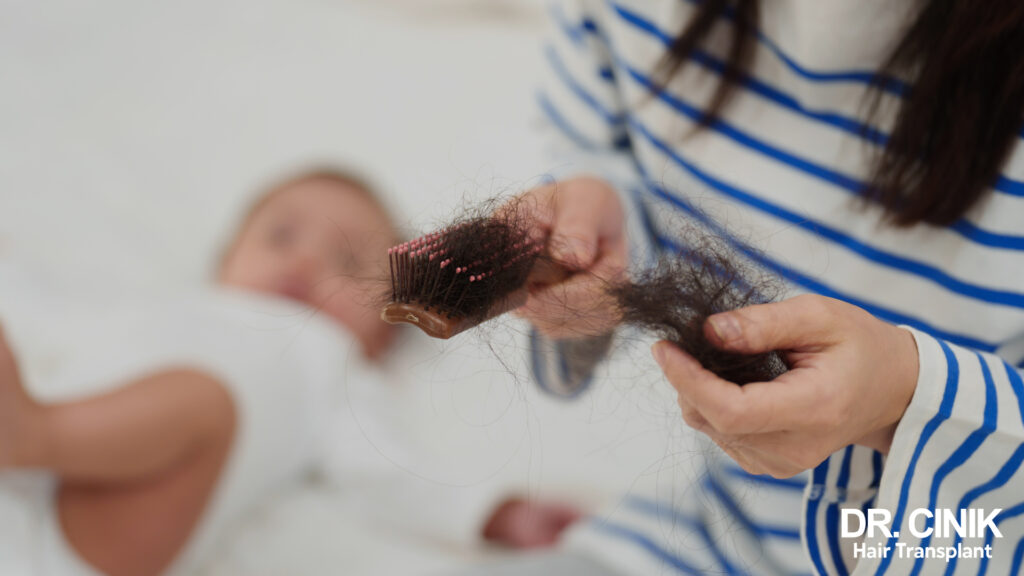Alopecia Barbae: What is Beard Alopecia?

Summary
Beard alopecia, or alopecia barbae, is a condition that affects many men across the UK. This condition manifests as a sudden loss of beard hair, usually in the form of circular patches. While it is sometimes confused with a simple lack of natural facial hair growth, it is actually the result of an autoimmune reaction in the body against its own hair follicles (Nwosu & Miteva, 2023). What are the causes? How is it diagnosed and treated? Discover what beard alopecia is, its symptoms, potential causes, and treatment options.
What is Beard Alopecia?
Beard alopecia is a specific form of alopecia areata that exclusively affects the beard area. This condition manifests as a loss of hair, usually in distinct patches, but in more severe cases, it can affect the entire facial hair.
This condition is autoimmune in nature, meaning it results from a malfunction of the immune system. Indeed, your own defence system mistakenly attacks the healthy cells of your hair follicles, causing the beard hair to fall out (Nwosu & Miteva, 2023). More specifically, it is a T-cell-mediated reaction that disrupts the hair follicle cycle, leading to a premature termination of the growth phase (Nwosu & Miteva, 2023).

The main characteristic of alopecia barbae is its sudden onset. Affected men usually notice that their beard hair starts to fall out rapidly, forming circular bald patches on the face.
Good to know: It’s important not to confuse beard alopecia with naturally hairless areas. In the case of hairless areas, you have never had hair in that spot. However, in the case of alopecia, hair was previously present but has fallen out simultaneously, leaving a previously hairy area completely smooth.

How Does Alopecia Barbae Manifest?
Beard alopecia presents with characteristic symptoms that generally allow it to be identified quite easily.
Hair loss occurs in a sudden and rapid manner, often within just a few days or weeks. This abrupt nature is one of the most striking features of this condition.
The affected areas take the form of small circular patches, usually about the size of a £1 coin. These patches are perfectly defined and completely devoid of hair (Cervantes et al., 2017).
As the condition progresses, these bald circles can expand and start to overlap, creating larger areas of alopecia. The hair surrounding the affected zones may turn white or grey before falling out as well, a phenomenon frequently observed in this pathology (Nwosu & Miteva, 2023).

Even before the hair loss, some men report experiencing itching or even painful sensations in the areas that will soon be affected. These precursor symptoms can serve as a warning sign of the impending hair loss.
The skin of the affected areas generally appears smooth, although it may sometimes feel rough to the touch. Some people also notice redness, irritation or mild inflammation in the bald patches, adding to the discomfort of the hair loss itself.
What Causes Beard Alopecia?
Beard alopecia is an autoimmune disease: the immune system mistakenly attacks the hair follicles, considering them as foreign bodies. However, the exact causes are still not well understood. Several factors are often involved:
- Genetic factors: There is a family predisposition to alopecia, especially if there is a history of alopecia, asthma or allergies. However, it is interesting to note that in contrast to classic alopecia areata, beard alopecia does not seem to demonstrate such a clear genetic predisposition (Nwosu & Miteva, 2023).
- Stress and anxiety: Intense physical or emotional stress can trigger or exacerbate the condition. Research has shown that certain stress-related neurotropins, such as nerve growth factor and substance P, may play a role in the premature termination of the hair follicle growth phase (Ito, 2010).

- Environmental factors: Viral infections or hormonal changes may also play a role. For example, associations have been made between beard alopecia and various conditions, including H. pylori infection, which, when treated, can sometimes lead to remission of the alopecia (Campuzano-Maya, 2011).
How to Treat Beard Alopecia?
The psychological impact of beard alopecia can be considerable. Although this condition poses no physical health risk, it directly affects the appearance of the face and can seriously impact self-esteem. Men suffering from it naturally seek effective solutions to restore their facial hair and fill in the bald areas.
However, it is important to be realistic: there is no miracle cure that guarantees complete and permanent healing. Nevertheless, several therapeutic approaches can bring significant results and allow hair regrowth in many cases.

For those who prefer natural approaches, certain dietary supplements can play a beneficial role. Zinc and biotin (vitamin B8) are particularly recommended to support hair health. A balanced diet, rich in essential vitamins and minerals, also provides important support for the health of the hair follicles.
Stress management represents another fundamental aspect of the treatment, given its potential role as a triggering factor.
Medicinal Treatments
While natural approaches provide a good starting point, medicinal treatments often yield more convincing results by directly targeting the mechanisms of beard alopecia.
Minoxidil, primarily known for its effectiveness against male pattern baldness, can also be used to treat beard alopecia. This medication acts by stimulating the hair follicles and promoting their revitalisation. Applied topically to the affected areas, it can encourage the regrowth of beard hair. However, it is important to note that the results are generally not immediate: a period of around three months is often required before observing the first signs of improvement. Studies show that topical 5% minoxidil treatment can achieve a regrowth rate of around 18.8% (Saceda-Corralo et al., 2017).

Anthralin represents another medicinal option in the form of a cream. This treatment has demonstrated efficacy in stimulating hair growth in cases of alopecia. However, this substance can cause skin irritation, particularly on the sensitive facial skin. It is therefore essential to use it with caution, strictly following the recommended dosages from your doctor and applying it only to the hairless areas. Some studies have shown the effectiveness of anthralin combined with other treatments for severe alopecia cases (Durdu et al., 2015).
Intralesional corticosteroid injections are also worth mentioning among the effective treatments. According to clinical research, around 44% of patients receiving steroid injections achieve more than 75% regrowth, making it one of the most effective therapeutic approaches for beard alopecia (Saceda-Corralo et al., 2017).
JAK (Janus kinase) inhibitors represent a recent and promising advancement in alopecia treatment. Tofacitinib, taken orally at a dose of 5 mg twice daily, has shown encouraging results, with up to 22% of patients achieving complete beard regrowth after an average period of 16 months (Kerkemeyer et al., 2020).

Beard Transplant
Among all the available solutions, beard transplant, particularly the FUE (Follicular Unit Extraction) technique, stands out as the treatment offering the most consistent and lasting results for beard alopecia.
This surgical procedure directly draws inspiration from hair transplant techniques, adapted specifically for the facial area. The objective is to restore the density and aesthetics of the beard by transplanting hair follicles into the areas affected by alopecia.

The process involves harvesting grafts from a donor area, usually located on the scalp. This choice is not arbitrary: scalp hair and beard hair have a relatively similar composition, allowing for a harmonious integration of the grafts.
Did you know? Despite their scalp origin, once implanted in the beard area, these follicles adapt to their new environment and produce beard hair, not head hair.
What are the Benefits of Beard Transplant?
The advantages of a transplant performed by a specialist like Dr Cinik are numerous. One of the major benefits is the improvement in density and uniformity of the beard. Thanks to a meticulous implantation of the hair follicles, the patient achieves a natural result, with a fuller and more even beard.

Another advantage of the transplant is the ability to precisely redefine the contours of the beard. Whether it’s structuring the jawline, adjusting the sideburns or adding volume to the chin, Dr Cinik ensures a harmonious and tailored result for each patient.
The correction of asymmetries and the filling of sparse areas are also essential aspects of this procedure. Certain natural irregularities, whether genetic or scar-related, can be corrected with great precision through the transplant.
Dr Cinik’s approach is based on a detailed facial analysis and carefully calculated implantation, ensuring a natural integration of the follicles and a balanced hair distribution. By choosing a renowned expert in the field, patients benefit from cutting-edge expertise and a durable aesthetic solution to regain a dense beard.

Sources
Campuzano-Maya, G. (2011). Cure of alopecia areata after eradication of Helicobacter pylori: a new association? World Journal of Gastroenterology, 17(26), 3165-3170. https://doi.org/10.3748/wjg.v17.i26.3165
Cervantes, J., Fertig, R. M., Maddy, A., & Tosti, A. (2017). Alopecia areata of the beard: a review of the literature. American Journal of Clinical Dermatology, 18(6), 789-796. https://doi.org/10.1007/s40257-017-0297-6
Durdu, M., Özcan, D., Baba, M., & Seçkin, D. (2015). Efficacy and safety of diphenylcyclopropenone alone or in combination with anthralin in the treatment of chronic extensive alopecia areata: a retrospective case series. Journal of the American Academy of Dermatology, 72(4), 640-650. https://doi.org/10.1016/j.jaad.2015.01.008
Ito, T. (2010). Hair follicle is a target of stress hormone and autoimmune reactions. Journal of Dermatological Science, 60(2), 67-73. https://doi.org/10.1016/j.jdermsci.2010.09.006
Kerkemeyer, K. L. S., John, J. M., Sinclair, R., & Bhoyrul, B. (2020). Response of alopecia areata of the beard to oral tofacitinib. Journal of the American Academy of Dermatology, 82(5), 1228-1230. https://doi.org/10.1016/j.jaad.2019.10.058
Nwosu, A., & Miteva, M. (2023). Alopecia Areata Barbae in a Nutshell. Skin Appendage Disorders, 9(3), 179-186. https://doi.org/10.1159/000529389
Saceda-Corralo, D., Grimalt, R., Fernández-Crehuet, P., Clemente, A., Bernardez, C., Garcia-Hernandez, M. J., et al. (2017). Beard alopecia areata: a multicentre review of 55 patients. Journal of the European Academy of Dermatology and Venereology, 31(1), 187-192. https://doi.org/10.1111/jdv.13896




